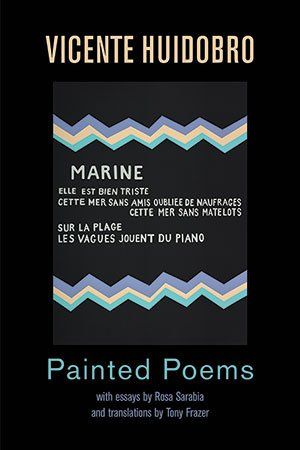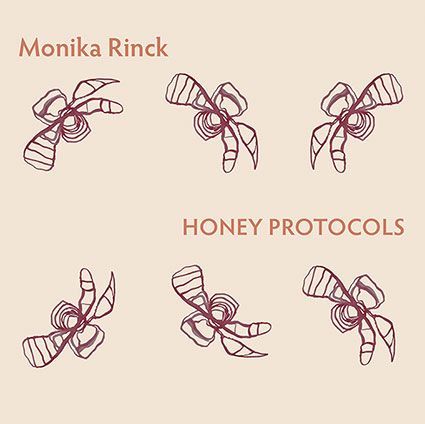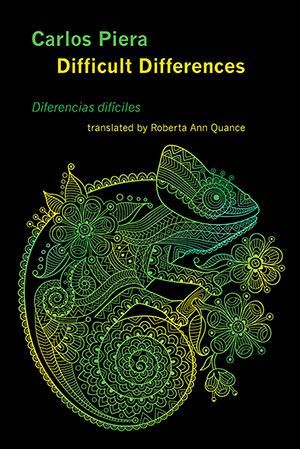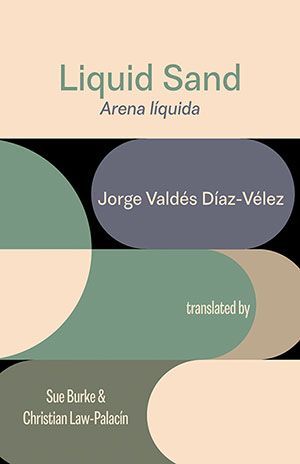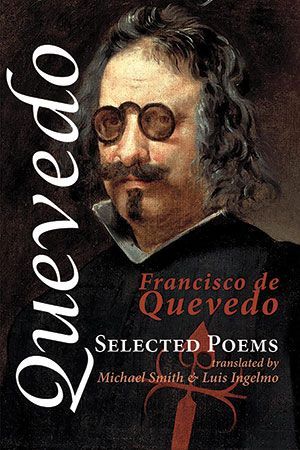2025 Titles — in date order
Bridget Khursheed Exact Colour of Snow
Published January 2025. Paperback, 86pp, 9 x 6ins, £10.95 / $18
ISBN 9781848619678
The Exact Colour of Snow
articulates a complicit, playful commentary on our mundane interactions with the natural world. Notes, fragments and glimpsed biographies explore how we ignore our fragile landscape even while grounded in its rhythms, shapes and colours. Skeining through the fashion and factories of global import export and dye making, we travel back to soil, plants and animals. A route that offers different harvests: clearing bombs to erect North Sea windmills in the Mesolithic sludge of Doggerland, unseasonal Abbotsford oranges, and the production of fine leather for golf gloves from hairsheep in Yemen and North Africa. Behind the scenes in these poems, the excluded – often mothers or young women – observe and study to understand the whole shape of things. The final colour of snow in this collection is green.
Exact Colour of Snow follows Bridget Khursheed’s debut,
The Last Days of Petrol, which was hailed by Joyce McMillan, of The Scotsman, as “…brave, brilliant and chilling poetry, which almost forces a recognition of the new precarity of human life on earth”.

Martin Anderson Before Dark: Collected Poems
Published January 2025. Paperback, 412pp, 9 x 6ins, £19.95 / $32
ISBN 9781848619609
Before Dark: Collected Poems reflects Anderson’s peripatetic lifestyle of three decades. During a weekend in Paris in 1971, whilst teaching at the University of Grenoble, he met T.T. Wong, a young Chinese artist from Shanghai, and their long discussions cemented his aspiration to go East. English society had, he felt, since he was born into it shortly after the end of World War II, succeeded only in submerging his nose in the effluvium of a squalid sewer of class discriminations, so the time was more than ripe for him to bid farewell to the UK. Arriving, eventually, at the University of Hong Kong where T.T. Wong’s letter of introduction to a young Dostoevsky scholar heading a department had directed his feet, Anderson discovered that it was an institution where the
ancien régime (Terms of Service finely calibrated to reflect skin pigmentation…) was firmly entrenched. After a good number of years he moved still further east, to Manila and the University of the Philippines. Through all these years, and the first few years of his return to the UK, the poems of
Before Dark were written, along with the prose
The Hoplite Journals, described by the novelist James Hamilton-Paterson as “enter[ing] that select pantheon of books to travel with, a vademecum ... A most remarkable achievement.”

Carmen Bugan Tristia
Published January 2025. Paperback, 88pp, 9 x 6ins, £10.95 / $18
ISBN 9781848619661
In
Tristia, Carmen Bugan tests the lyric against loss once again, as everything collapses around her, but this time much closer to home. These are poems about forging a stronger self in the fires of her lifetime, whether they are the forest fires that cover the American continent, the war in Ukraine, or her own world turned to ashes. The speaker in the poem 'Enheduana' laments:
He spat on my oven full of food,
Walked over my baskets full of bread,
Soiled the marriage bed, left the children crying,
And my heart toiling with heaven and earth.
Her poems insist on the beauty of the natural world, itself under threat, as a source of strength, as in 'Hawk,' where the speaker prays:
Hawk, take everything
That is weak in me,
In your claws: eat it.
Leave me wise and patient.
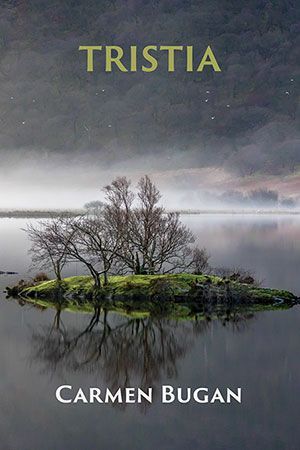
Liam Guilar The Fabled Third
Published January 2025. Paperback, 174pp, 9 x 6ins, £14.95 / $23
ISBN 9781848619647
The Fabled Third is the final instalment in the sequence that began with A Presentment of Englishry. It continues to follow Laȝamon's 12th century version of the legendary history of Britain up to the death of Uther, ending as the story begins to overlap with Sir Thomas Malory’s later, better known tale of King Arthur. When Laȝamon's Uther arrives at Tintagel, he doesn’t enter the late fifth century settlement revealed by recent archaeology, but a castle that didn’t exist on that site. Looking at the fifth century through the lens of the twelfth produces a blurred version of the past. My attempts to reconcile that version with what is now known about late fifth century Britain makes the picture even less focussed. I recommend the pleasures of a flexible attitude towards geography, history, architecture and chronology.
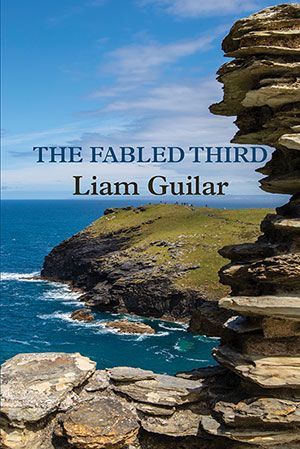
Gëzim Hajdari Selected Poems 1990–2020
Translated from Italian by Sarah Stickney.
Published January 2025. Paperback, 196pp, 9 x 6ins, £14.95 / $23. English only.
ISBN 9781848619616
This volume offers a translation of a large proportion of the author's recent huge selected volume in Italy. Restricted to the English versions in order to save the book from a vast page-count, it offers readers a superb over-view of a lifetime's creativity in Italian, and Albanian — for some of the work began life in the author's native language, before his exile in Italy.
“Gëzim Hajdari’s generous literary, scholarly, and editorial work extends across different countries and languages. Resistance, commitment, social justice, freedom, courage, and solidarity are at the centre of his research. In his own words, ‘Good poetry is an act of life and of ethics. A great life means great poetry.’ An already established poet in Albania, after moving to Italy, the author went through a patient, painful, and empowering reconstruction of his unique poetic voice, which has since developed as translingual Albanian-Italian.
This edition represents the first English translation of Hajdari’s Poesie scelte, masterfully carried out by Sarah Stickney, who reconstructs the sense of subjectivity and history that is foundational to Hajdari’s poetic career. This book as such presents Anglophone readerships not only with a masterpiece of translingual poetry but also with what I have previously defined as Hajdari’s first self-anthology, that is, a retrospective collection and reorganisation—constructed by the author himself—of a substantial part of his published poetic work, here meticulously re-read and re-interpreted.’’—Alice Loda
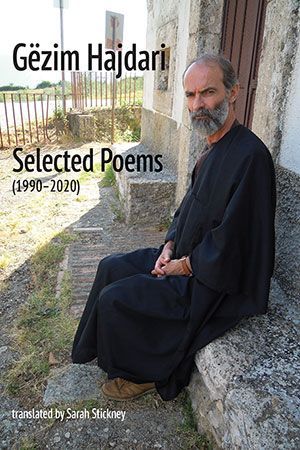
Jennifer Clement A True Story Based on Lies
2nd Edition. Published January 2025. Paperback, 120pp, 9 x 6ins, £12.95 / $20
ISBN 9781848619548
Ebook edition ISBN 9781848619579, available from the usual online retailers, £4.95 / $7.50
A True Story Based on Lies is a remarkable and original novel that addresses the universal issues of class discrimination, male oppression and female servitude through dual narratives of spellbinding power. Set in contemporary Mexico, the book charts the consequences of a sexual relationship between Leonora, a servant in the wealthy O'Connor home, and her master. When a child, Aura Olivia, is born from this union she is brought up as the daughter of the house. As the novel unfolds, the "true" story gradually emerges. First published over 20 years ago, but out of print for some time, we are delighted to reissue this early example of the author's fiction.
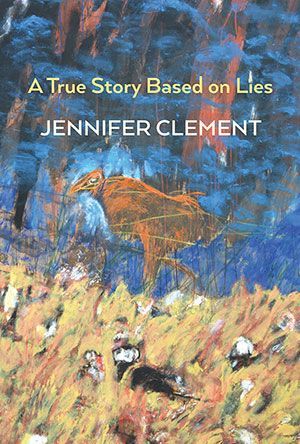
Jennifer Clement The Poison That Fascinates
2nd Edition. Published January 2025. Paperback, 160pp, 9 x 6ins, £12.95 / $20
ISBN 9781848619555
Ebook edition ISBN 9781848619586, available from the usual online retailers, £4.95 / $7.50
Deserted by her mother as a baby, Emily lives with her father in Mexico City, working in the local orphanage. When a mysterious cousin, Santi, appears on the doorstep, he brings with him family secrets, and soon Emily finds desire and temptation have overturned her straightforward life forever.
The Poison That Fascinates
is an alluring fable forged in astonishing, sensuous prose. Jennifer Clement conjures a world heavy with the weight of Mexican superstition, mythology and faith, where saintliness and mortal sin sit side by side. The author's second novel, out of print for a little while now, offers another glimpse of Jennifer Clement's continuing growth as a literary novelist.
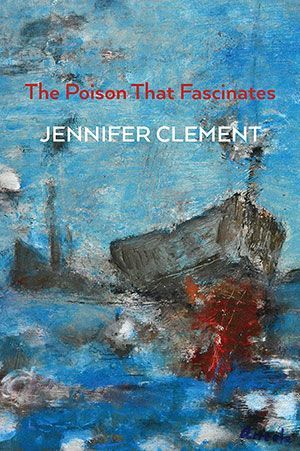
J.R. Carpenter Measures of Weather
Published February 2025. Paperback, 98pp, 9 x 6ins, £12.95 / $18
ISBN 9781848619753. SHORTLISTED FOR THE 2025 LAUREL PRIZE
Measures of Weather is about more than just weather. What isn’t weather? Weather here is a stand-in, for the elemental, the transitional, the ungovernable. And what does it mean to measure? To find intersections. To articulate complex subject positions. To use language to make tangible changes in the material world. To call attention to the invisible in all its myriad of forms, from the minuscule to the gigantic. To articulate the inchoate, to give shape to the ineffable, the transient, and the impossible. Carpenter uses language as a medium to grapple with organisational structures and their failings, to think beyond the scale of the human body, to engage with a tangle of vast systems — of air, of glass, of wind, of west.
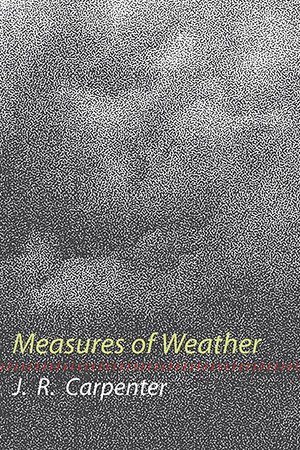
Anna Akhmatova In Love and Revolution — Selected Poems
Translated from Russian by Stephen Capus
Published February 2025. Paperback, 110pp, 9 x 6 ins, £12.95 / $20
ISBN 9781848619685 Poetry Book Society Translation Choice
Anna Akhmatova was born near Odesa, Ukraine, in 1889, as Anna Gorenko. She adopted her pen-name from the family of her mother. She attended school in Tsarskoe Selo, near St. Petersburg, and lived most of her life in that city with which so much of her poetry is intimately connected. She frequented the Tower, the famous literary salon of the symbolist poet Vyacheslav Ivanov, and in 1910 she married fellow poet Nikolay Gumilev. The couple were divorced in 1918, three years before Gumilev was executed by the Bolsheviks for counter-revolutionary activities.
Akhmatova achieved fame with her first collection of poems, Evening, published in 1912, and her subsequent collections, Rosary and White Flock consolidated her reputation as one of Russia’s leading poets during the period preceding the October Revolution. After 1917 she took the decision to remain in Russia, rather than join those of her fellow writers who were opting to go into exile in the West. Between the publication of the second edition of Anno Domini in 1923 and the death of Stalin in 1953—with a brief reprieve during the Great Patriotic War—she found herself subject to censorship, and in 1946 she was expelled from the Soviet Writers’ Union in the wake of the notorious Zhdanov speech, in which she was described as a ‘cross between a nun and a whore’. Nonetheless, although she faced much personal hardship and a protracted exclusion from publication as a consequence of her decision to remain in Russia, she was also able to create Requiem, her great affirmation of solidarity with the victims of the Stalinist purges. Stephen Capus's formal translations offer a new way of approaching Akhmatova for Anglophone readers.
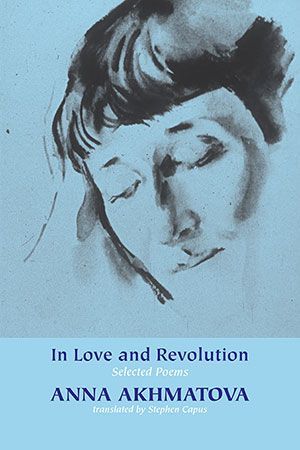
Monika Rinck Honey Protocols
Translated from German by Nicholas Grindell.
Published February 2025. Paperback, 84pp, 8 x 8ins, £12.95 / $20.
ISBN 9781848619630
Among many other things,
Honey Protocols
can be approached as a dictionary (offering peculiar and extravagant definitions of creatures and concepts alike), as a routine documenting its own abolition (48 of its 66 poems open with the same phrase, escaping this compulsion towards the end), or as a book of tall tales (in one, two men sail a three-masted trampoline out onto a lake, the trampoline capsizes, they sink, the lake spits them back out onto the promenade). The collection might also be read as a dreamlike visit to the battlefield where the kind of stories we like to tell ourselves cross swords with the kind of stories that are constantly told to us (and sold to us) by the massed forces of mockery (with tech support from the Delphic engineers).
Vicente Huidobro Skyquake / Temblor de cielo / Tremblement de ciel (2nd, revised edition)
2nd edition. Translated from Spanish & French by Tony Frazer
Published February 2025. Paperback, 128pp, 9 x 6ins, £12.95 / $20
ISBN 9781848619791
The prose-poem
Temblor de cielo
was written in 1928 and published in 1931. A more unified work than its companion volume,
Altazor —also published in 1931, but longer in gestation—this might owe more to its style of delivery: an ecstatic outpouring of words that largely revolve around the themes of love, sex and death. The Isolde to whom much of the poem is addressed is an idealised feminine figure—part goddess, part idealised beloved, part Isolde from Wagner’s opera (another ecstatic outpouring on the theme of love, sex and death) and part Ximena Amunátegui, the young woman who had become the poet’s second wife. The poem is also a sustained lyric effusion of a kind that Huidobro had never produced before, and it marks the point at which his work moves on from the barnstorming avant-garderie of his younger years to a more mature style, albeit one influenced by surrealism, a movement which Huidobro had previously attacked. It is also the last time that Huidobro was to adopt the god-like narrative persona that occurs in his earlier work. In 1932 the author's French version appeared in Paris, which differs in some respects from the Spanish; for this second edition we have added that French version, plus a translation of
that version, and a number of revisions to the original translation.
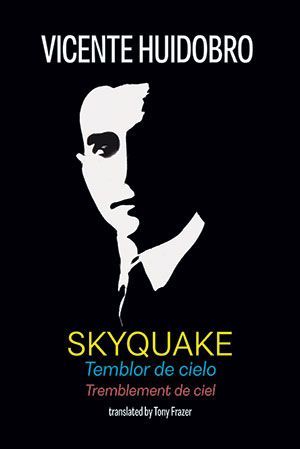
Maria Barnas Night Boat & other poems
Translated from Dutch by Donald Gardner. Published with the support of the Dutch Foundation for Literature.
Published February 2025. Paperback, 108pp, 9 x 6ins, £12.95 / $20
ISBN 9781848619319
Maria Barnas’ witty and subversive poetry can be seen as a quest for an identity that always just eludes her: ‘The floors / are buckling and the windows and doors / show cracks. These are the hinges / of an existence I call my own.’ Nothing is what it seems for her and appearances are indeed just that — appearances. In another poem, she points out that, ‘The corner of an eye can contain many things’, and this could almost be taken as a mission statement.
Barnas is an artist and critic as well as a poet. In her poetry she asks how adequate language is to grasp what we see. Is one’s native language a ‘home’? How reliable is it and is it equal to the task of representing reality, above all the reality of our interaction with each other, that is undermined by ambiguity, personal history, as well as the secret passages of Freudianism. This enquiry comes to a peak in her most recent collection, Diamond without r, in which she investigates her Polish roots as well as her adolescent years spent in Swindon. Polish words and scenes are held up to the prism of her lines, and there are also fragments of English, which may comprise flashbacks of her English experience.
For the reader this poetry has an unstable character; it expresses an urgency to belong as well as a sense of rejection, a desire sometimes to say two, contradictory things at once. It is at times quizzical, defiant and mocking.
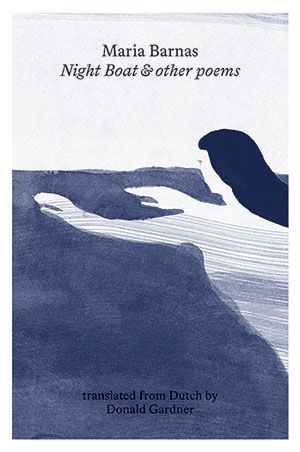
Jeremy Hooker With a Stranger's Eyes
Published March 2025. Paperback, 86pp, 8.5 x 5.5ins, £10.95 / $18
ISBN 9781848619708
"With a Stranger's Eyes is in two parts. The first, 'Dutch Girl' is set mainly in the Netherlands, where Jeremy Hooker lived for four years with his wife, Mieke. The second, longer part records responses to history and landscapes primarily in South Wales where Hooker has lived since 2001. It also celebrates a number of Welsh writers, such as David Jones, Idris Davies, and Waldo Williams. The spirit of the poetry reflects the Welsh tradition of praise poetry. It is, however, very much the work of an English poet who recognises that he will always be a stranger in Wales, as he was also in Holland. Strangeness, in fact, is a fact that he recognises as integral to our human condition, which may produce an 'art of seeing' below superficial vision of surfaces into perception of the sacred and the quickness of existence." —Jeremy Hooker
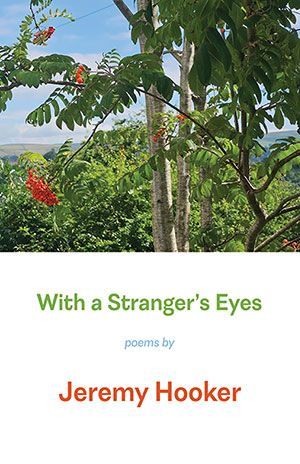
Peter Larkin Scarcely Carry All Vast Woods
Published March 2025. Paperback, 98pp, 9 x 6ins, £12.95 / $20
ISBN 9781848619739
These poems explore further and future ways of plants and trees, and won’t duck from being permeated at the same time by irradiating horizons or tensile symbols which perform a vital role in any multi-dimensional inter-relations.
‘This is not a poetry about trees, but about trees as a means of thinking, the material through which we can and do think, a world, its ontology, its epistemology too.The tree as discourse. The tree as perceiver of what the tree needs to know.’ —Stephen Collis
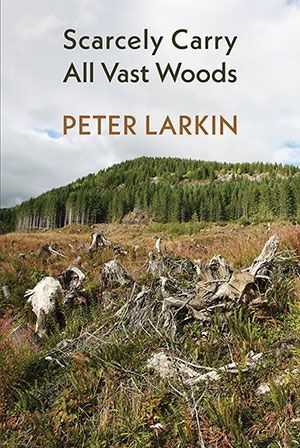
Trevor Joyce What's in Store
Shearsman Library Vol. 20. Second edition. First UK edition.
Published April 2025. Paperback, 328pp, 9 x 6ins, £19.95 / $32
ISBN 9781848619692
What's in Store, first published in Canada in 2008, was Trevor Joyce's first full-length book following the publication of his collected poems,
with the first dream of the fire they hunt the cold (Shearsman Books, 2001; 2nd edition 2003). For this volume, the author shaped eight years' worth of work — individual poems, extended sequences, translations from the Irish, Chinese, and other languages — into a continuous book-length structure. These poems find Joyce reaching out towards a jarringly wide range of styles and voices, from the tart lyricism of his re-workings of European folksongs to the ferociously dense collage/inscription of "STILLSMAN." Brought together as a book, the poems take on further meanings:
What's in Store is at once a Borgesian guide to the history, customs and scientific discourse of an unknown country, and an Oulipian textual machine, whose workings by turns terrify and exalt.
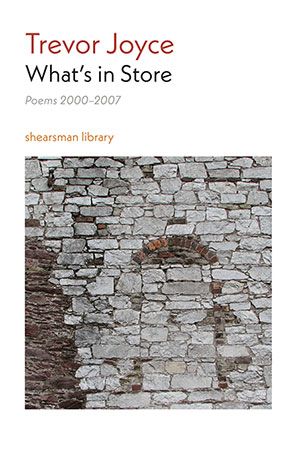
Jeremy Hooker & Lee Grandjean Presence and Place
Published April 2025. Paperback, 208pp, 9 x 6ins, £14.95 / $23
ISBN 9781848619715
"I have no record of the date when I first met Lee Grandjean but I remember the occasion well. It was towards the beginning of my period as creative writing fellow at Winchester School of Art and I had introduced myself to the students by giving a reading of my poetry. At the end of the reading, to my astonishment, a man in a white boiler suit stood up and clapped. Nervous on this occasion, my first thought was that this was intended as satire. It was, in fact, appreciation, and this was my first encounter with Lee Grandjean, who, at that time, held a sculpture fellowship at the School of Art. We talked after the reading and it wasn’t long before he was showing me the sculpture he was at work on. Thus began a creative relationship that has been, and continues to be, immensely important to both of us." —Jeremy Hooker
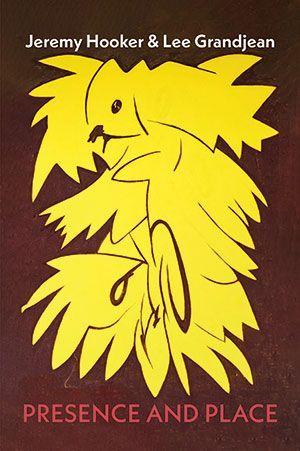
Alexander Kappe, Nicola Thomas & Jana Maria Weiß (editors)
The Opposite of Seduction: New Poetry in German
WINNER, English PEN Award
Translated from German by various hands. Introduced by Nicola Thomas.
Published April 2025. Paperback, 204pp, 9 x 6ins, £16.95 / $25
ISBN 9781848619074
This is the first major anthology of contemporary German-language poetry in English for more than 40 years. Authors featured are: Yevgeniy Breyger, Sonja vom Brocke, Alexandru Bulucz, Carolin Callies, Ann Cotten, Ulrike Draesner, Oswald Egger, Elke Erb, Daniel Falb, Christian Filips, Dinçer Güçyeter, Martina Hefter, Jayne-Ann Igel, Hendrik Jackson, Thomas Kling, Dagmara Kraus, Birgit Kreipe, Nadja Küchenmeister, Jan Kuhlbrodt, Georg Leß, Friederike Mayröcker, Christoph Meckel, Steffen Popp, Kerstin Preiwuß, Monika Rinck, Ulrike Almut Sandig, Sabine Scho, Daniela Seel, Verena Stauffer, Ulf Stolterfoht, Sebastian Unger, Anja Utler, Peter Waterhouse, and Uljana Wolf.
Translators are: Shane Anderson, Kurt Beals, Paul-Henri Campbell, Aimee Chor, Brian Currid, Andrew Duncan, Joshua Daniel Edwin, Christopher Fenwick, Gerald Fiebig, Iain Galbraith, Robert Gillett, Nicholas Grindell, Catherine Hales, Christian Hawkey, Jayashree Hari Joshi, Alexander Kappe, Karen Leeder, Grace Nissan, Caroline Wilcox Reul, Bradley Schmidt, Jake Schneider, Joel Scott, Sophie Seita, Donna Stonecipher, Nicola Thomas, Amy Visram and Jana Maria Weiß.
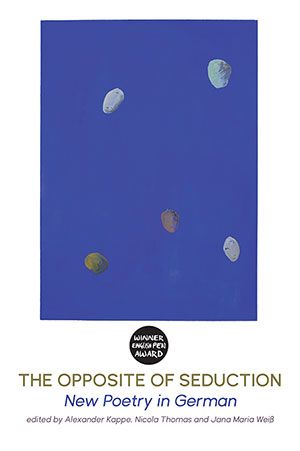
Joseph Donahue This to That and Thus: Poems 1983–1998
Shearsman Library Vol. 21
Published April 2025. Paperback, 186pp, 8.5 x 5.5ins, £14.95 / $23
ISBN 9781848619838
This to That and Thus contains four separate complete collections, the author’s first four books, thus demonstrating the wellsprings of a remarkable career.
“For a poetry that yields such immediate and immense pleasure, the work of Joseph Donahue remains hard to characterize. Joseph Donahue has spent [four] decades crafting a sensibility that straddles the often-reductive binaries of literary discourse. As sacred as it is profane, as popular as it is avant-garde, and as funny as it is forlorn, Donahue’s poetry puts forward a voice that resists easy categorization. While there are many aesthetic reasons that make Donahue’s poetry difficult to encapsulate, the most pressing obstruction to characterizing his poetry is the little precedence that exists for such an endeavor.”
—J. Peter Moore,
Jacket2
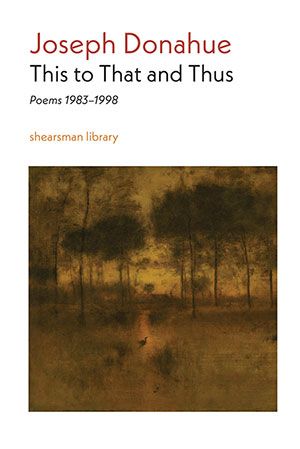
Carrie Etter Veer, Oscillate, Rest
Published April 2025. Chapbook, 32pp, 8.5 x 5.5ins, £7.50 / $10.95
ISBN 9781848619814
The title
Veer, Oscillate, Rest
conveys the energy of these poems as much as the range of their interests, from Trump’s first presidency, to environmental disaster, to Brexit, to the ‘teeming’, lived conjunction of embodiment and consciousness, is chapbook brings together some of Carrie Etter’s best uncollected poems from 2008 to 2023 in a selection that foregrounds her rigour, intelligence, and irrepressible verve.
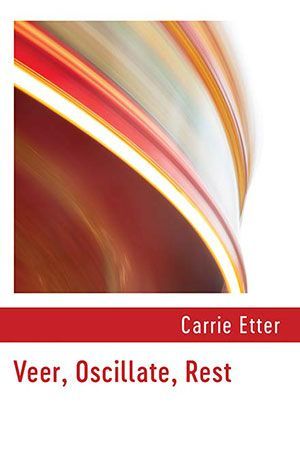
Gustaf Sobin Uncollected Poems
Shearsman Library Vol. 22.
Published April 2025. Paperback, 188pp, 9 x 6ins, £14.95 / $23
ISBN 9781848619296
Gustaf Sobin's Collected Poems appeared posthumously in 2010, but left out work which had been collected in special limited editions — and which were outside the main trajectory of his work — as well as work which had been published in magazines but which had then been dropped from his main published collections. This Uncollected volume redresses the balance, and, for good measure, includes an interview with the Mexican poet, Tedi López Mills, which has only previously been published in Spanish. The volume in which that interview appeared, like the rest of the contents of this book, is no longer in print elsewhere.
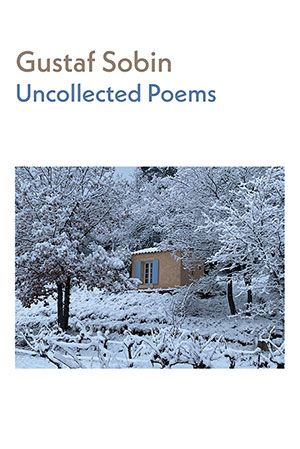
Vicente Huidobro Arctic Poems
Translated from Spanish and French by Tony Frazer. Bilingual volume.
Published April 2025. Paperback, 140pp, 9 x 6ins, £12.95 / $20
ISBN 9781848619937
Huidobro published Poemas árticos in Madrid in 1918, this being the last of a rapid series of publications which established him as a major new talent both in French and in Spanish. Poemas árticos is particularly interesting in that it shows the author taking on board lessons learned from Guillaume Apollinaire—an early friend in Paris—and also Pierre Reverdy; Reverdy and Huidobro soon fell out, seemingly because of a dispute over who was the real originator of Creationism, the movement associated with Huidobro, and of which he was—to be honest—the only full-time member. In any event, this is his longest Spanish-language volume up to this point, and marks a significant breakthrough, bringing as it does the latest French innovations into Spanish for the first time. This second edition features some revisions to the translations, but also reacts the layouts of the poem to accord as far as possible with the 1918 Madrid edition.
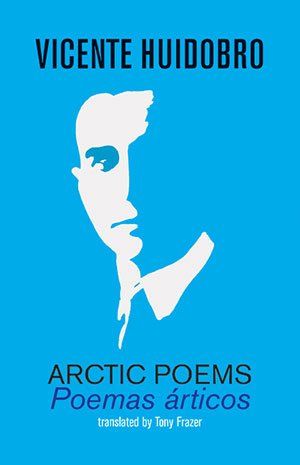
Tony Frazer (ed.) Shearsman 143 / 144
Published April 2025. Paperback, 100pp, 8.5 x 5.5ins, £9.95 / $17
ISBN 9781848619784
The first double issue of
Shearsman magazine for 2025, featuring poetry by Martin Anderson, Claire Crowther, Keri Finlayson, Jane Frank, Amlanjyoti Goswami, David Hadbawnik, Matt Haw, Norman Jope, Alicia Byrne Keane, Linda Kemp, L. Kiew, Fiona Larkin, John Levy, Nicky Melville, John Newson, Anita Ngai, Mark Nowak, Eliza O'Toole, Adam Panichi, John Phillips, Ian Pople, Anna Reckin, Wendy Saloman, Nathan Shepherdson and Janet Sutherland, plus translations of Jürgen Becker (by Martyn Crucefix), Rilke (by John Greening), Evelyn Schlag (by Karen Leeder) and Volha Hapeyeva (by Annie Rutherford).
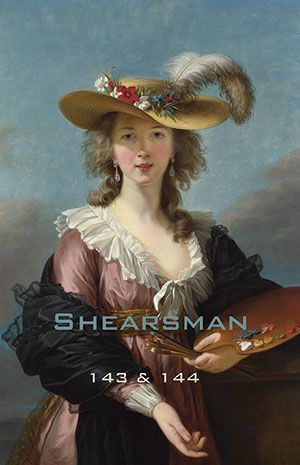
Fergal Gaynor Clio's Ground — New & Selected Poems
Published May 2025. Paperback, 86pp, 8.5 x 5.5ins, £10.95 / $18
ISBN 9781848619593
". . . there is that second strand, the fitful, halting strand of Irish modernism, a bare technique, picked up by Beckett and carried through by writers such as . . . neo-Classicist poet, Fergal Gaynor. James Joyce would have recognised these contemporary writers instantly, knowing that their modernist efforts to escape from the story-teller material of Ireland should lead to new forms . . ." (Thomas McCarthy, Irish Examiner)
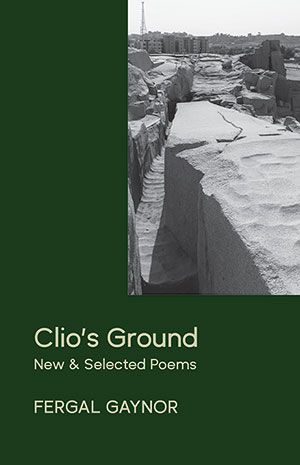
Frances Presley Black Fens Viral
Published May 2025. Paperback, 86pp, 8 x 8ins, £12.95 / $20
ISBN 9781848619883
Black Fens Viral began in summer 2020 when I was recovering from Covid. Lockdown was lifting and I was able to travel to Norfolk on the slow train which goes through the Black Fens of East Anglia. This flat, almost hedgeless and treeless, agricultural landscape of black peat was once marshland, before the drainage of the fens. The first sluice was created by the Dutch engineer Cornelius Vermuyden in 1642 to limit the tidal flow up the Great Ouse, but he did not realise that the peat would shrink after it dried out and be blown away by the wind. We now know that it also adds to global warming through leaking carbon dioxide and means the risk of flooding is more acute than ever.
I often write about landscapes I love, such as Exmoor or the north Norfolk coast, protected by national parks and nature reserves, but I needed to write about this damaged landscape, where plants are exploited and biodiversity ignored. It corresponded to the damage caused by the pandemic, a result of human incursions into wild places. Writing about the Black Fens also brought back memories of my childhood in Lincolnshire. Depopulated by mechanised agriculture, it was a lonely landscape, as well as an ecological disaster. (Frances Presley)
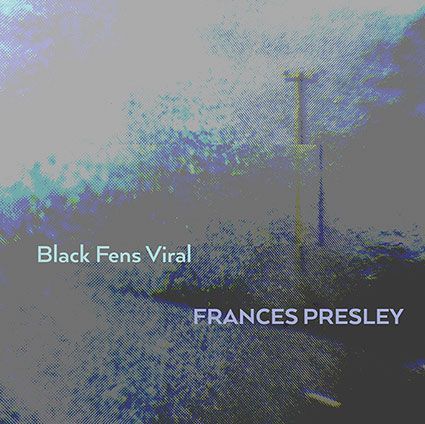
Vicente Huidobro Uncollected Poems
Translated from Spanish by Tony Frazer
Published May 2025. Paperback, 196pp, 9 x 6ins, £14.95 / $24
ISBN 9781848618183
This assemblage of uncollected Huidobro texts includes stray manuscripts — few of these actually survive and have not been collected
somewhere in the previous books in this series — and his occasional poems: works in honour of the Soviet Union, of Republican Spain, of fallen France, of his paramour (and later common-law wife) Ximena, plus a vitriolic attack on some Italian (i.e. fascist) aviators working with the Chilean Air Force. Two early works are added, from the period that might be regarded as juvenilia, as they show an early interest in shaped poems — not quite
calligrammes, but with some affinity. We have also located one poem which has never been published in book form before, either in Spanish or in English.
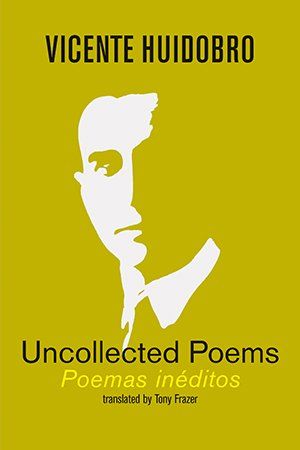
Marina Tsvetaeva Roland's Horn — Poems 1917–1924
Translated from Russian by Christopher Whyte
Published May 2025. Paperback, 122pp, 8.5 x 5.5ins, £12.95 / $20
ISBN 9781848619760
The years between the twin revolutions of 1917 and Tsvetaeva’s departure at the end of April 1922, together with her daughter Alya, for Berlin and then Prague were the most productive of her entire career. In addition to a host of shorter, lyrical items, she wrote the long poems On a Red Steed and Tsar-Maiden, the latter a reworking and reimagining of folklore material in characteristically disconcerting and idiosyncratic style. Thanks to a chance meeting on the train which brought her back from Crimea to Moscow in November 1917, Tsvetaeva became acquainted with Pavel Antokolsky and, through him, with the members of the drama studio run by Yevgeny Vakhtangov, inspiring her to write no fewer than five dramas in verse in the space of two years. There, too, she met the actor Yury Zavadsky, and the diminutive actress with an English surname, Sonechka Holliday, to both of whom she dedicated extended cycles not fully assembled till after her death, as was the cycle of twenty-seven poems addressed to the painter Nikolay Nikolayevich Vysheslavtsvev (1890–1952), headed only by his initials.
The contrast between this outpouring of verse – an estimated 735 poems just for the period covered by this volume – and the background circumstances of inconceivable hardship, could hardly be more striking.

Carlos Piera Difficult Differences
Translated from Spanish by Roberta Quance. Bilingual edition.
Published June 2025. Paperback, 150pp, 9 x 6ins, £12.95 / $20
ISBN 9781848619203
"Can the poet speak for his fellow citizens while recognising the crisis of the self within himself? And the feeling of being disempowered? In modern times, who has ever asked the poet to set himself up as a spokesperson? Piera tackles this problem by demonstrating a prodigious ability to imagine himself as other in order to talk about himself. The poet, characteristically, lives by and through his characters, be they Cassandra (the unauthorised prophetess) mermaids (more threatened than threatening) or the outcast whom he ironically labels ‘weeds’. The worst fate is to have no voice or to have one that is despised, like Cassandra or the ‘weeds’, unable to do much more than scream. Poetry emerges from such contradictions." —From the prologue by Roberta Ann Quance
Paul Vangelisti Traveling
Published June 2025. Paperback, 86pp, 8.5 x 5.5ins, £10.95 / $18
ISBN 9781848619845
In his 80th year, the poet is obsessed with the notion of location and its effect on his writing. The book’s title, ‘Traveling’, underscores a fascination with the notion of here/there, Pasadena/Bagnone, exterior/interior, all of which upheld by a growing determination to discover the silence inhabiting language. Written between 2022–2025, Traveling celebrates the necessary illusions and forgiveness that characterize an almost 60-year career. Or as one of Vangelisti’s more recent poems reminds us:
The rest is anything but silence.
Now at this age still determined
to let song flourish and go where it may.

Vicente Huidobro Selected Poems (2nd, revised edition)
Edited by Tony Frazer. Translated from Spanish & French
by Michael Smith & Luis Ingelmo, Eliot Weinberger and Tony Frazer.
Published June 2025. Paperback, 216pp, 9 x 6ins, £14.95 / $23
ISBN 9781848619807 [Download a sample PDF from this book here .]
This selected edition presents an overview of all of Huidobro's work, from 1914 until 1948, when his final, posthumous volume was published. moving from the early symbolist work, though the high avant-garde phase towards the end of the First World War, then through the phase of Altazor and Temblor de cielo (Skyquake) , the highpoint of his career (both published 1931), and on into the quieter late poetry which synthesises the previous work and settles down into a post-vanguard style. Also includes manifestos and interviews. The revised 2nd edition replaces some poems now shown to better effect elsewhere in this series of books devoted to Huidobro, and features a number of revisions to others.
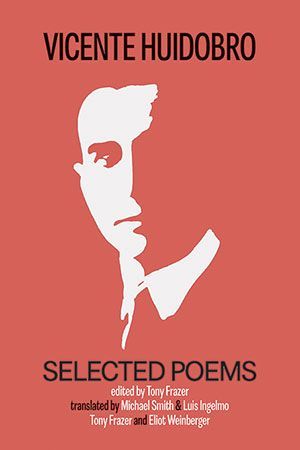
Eliza O'Toole Buying the Farm — a georgics of sorts
Published July 2025. Paperback, 136pp, 9 x 6ins, £12.95 / $20
ISBN 9781848619821
"Eliza O’Toole’s landmark work is much more than a ‘word-hoard’ of and around the farmland of East Anglia, the territory of Constable and Gainsborough. This is an angular book of linguistic inventiveness and substance, at once multilingual and polyphonic employing different registers to accommodate a divergent range and depth of agricultural, botanical, lepidoptera, historical and etymological knowledge. Each poem is in the present with an imposing sense of the past being visible within a mutable natural world. This is a mapping of place that digs deep down into the biochemistry and fragility of the land, wildlife, plants, insects, animals and farming life. In its slant investigation of the layered traces of time worked into the land, it considers whether current farming practices are obsolete by asking obliquely, ‘can the land afford a farm’ or ‘has the farm already been bought’? As a lexical analogue of the land, it delivers a vibrant, messy, stricken world of polychronic becomings. This is an extraordinary achievement." —David Caddy
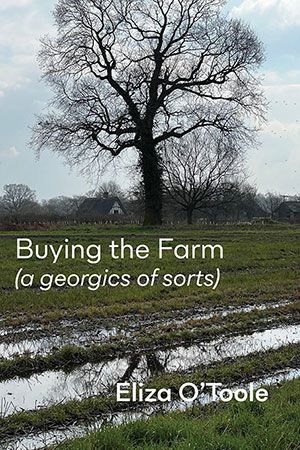
Richard Berengarten Imagems 3
Published July 2025. Chapbook, 32pp, 8.5 x 5.5ins, £7.50 / $10.95
ISBN 9781848619074
“The age both of present-day poetry and of poetry-to-come is irreducibly and inevitably transcultural, multilingual, international.” Together with his
Imagems 1
and 2 (2013, 2019),
Richard Berengarten’s third collation of statements on poetics reaffirms poetry as imaginational.
"Here, Richard Berengarten continues to advocate a numinous poetics, expressed in a language filtered through trees, whose oxygen we breathe. This is a poetics conceived in darkness, growing and spreading inexorably into light. For Berengarten, poetry begins and ends, and begins again, in an inherently shared present, spanning generations, where “all that’s needed is breath.”
—Katie Lehman

Geraldine Clarkson Singletary
Published July 2025. Chapbook, 32pp, 8.5 x 5.5ins, £7.50 / $10.95
ISBN 9781848619975
“The sun shall not strike them, nor any scorching heat…” (Book of Revelation). Poems of comfort and cream, of Lima, intimes, and home; still lives, still life, still alive… Bookish ruts, mystic prisons, spangles, cathedrals, islands, marshes; expungement; release. A small collection of torment and consolation.
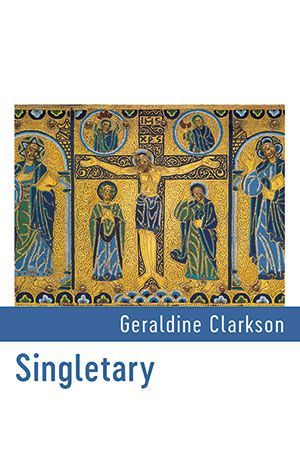
Jennifer Morag Henderson Jofrid Gunn
Published August 2025. Paperback, 99pp, 9 x 6ins, £12.95 / $20
ISBN 9781848619951
Jofrid Gunn tells the story of a woman who came from the Faroe Islands in the 16th century to marry into the Clan Gunn, in the north of Scotland. Inspired by the glimpses of lives found in archives, this is a biography in poetry. Each poem can be read individually, but when put together they tell the story of Jofrid’s life – descriptions of the incredible natural places she lived in, the power of the sea, her family life, encounters with the huldufólk or 'hidden people' of legend, and her small part in the clan battles and blood feuds of the time.
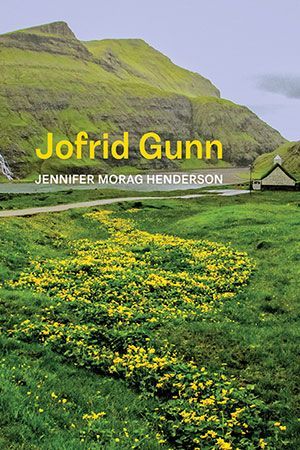
Malcolm Ritchie Mountain on Top of a Mountain
Published August 2025. Paperback, 114pp, 9 x 6ins, £12.95 / $20
ISBN 9781837380008
While editors and publishers in the past have always described my short form poems as haiku, I prefer to call the majority of the short form poems of the type in this collection as One-strike Poems, since the term ‘haiku’ relates to a very different cultural and historical mind-set and developmental literary process. And long before my awareness of haiku, the source of my short form poems came originally from my interest in the chants and prayers of indigenous peoples, and then later, graffiti on the walls of the various cities I either lived in or visited. Resulting in my early poems often being of an aphoristic or epigrammatic nature.
My poems at this time were also sourced in my encounters with an object or event, when a poem might immediately and spontaneously arise out of the experience and be committed, just as it is, to any piece of paper to hand, in that moment. And in the few instances where any change was made afterwards, it was only in the moving of a word or two from one line to another, or on very rare occasions, perhaps the changing of a single word. (Malcolm Ritchie)
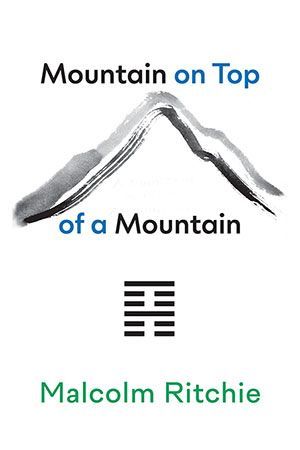
Arvind Krishna Mehrotra Of Least Concern
Published August 2025. Paperback, 112pp, 8.5 x 5.5ins, £12.95
ISBN 9781848619890. NOT FOR SALE IN INDIA OR NORTH AMERICA.
A companion to 2023's
Book of Rahim, this latest collection by Arvind Krishna Mehrotra offers recent poems, many of them from the lockdown period, written in the poet's garden —
studies, as he says, in the way that artists sketch what is before them. And "Whatever else it may be, a book of poems is also a municipal registry of births, marriages and deaths. This book is no exception."
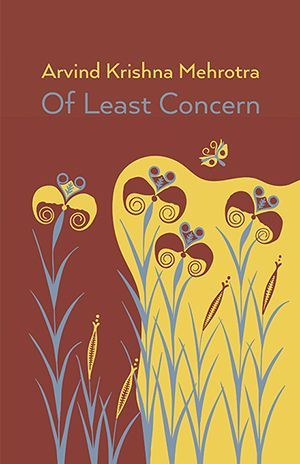
Kelvin Corcoran Under Tainaron
Published August 2025. Chapbook, 34pp, 8.5 x 5.5ins, £7.50 / $10.95
ISBN 9781837380046
Under Tainaron recasts elements of the myths of Orpheus and Eurydice and is rooted in the locations where that mythology originated. On that basis Corcoran’s libretto discloses its poignant relevance to our present world.
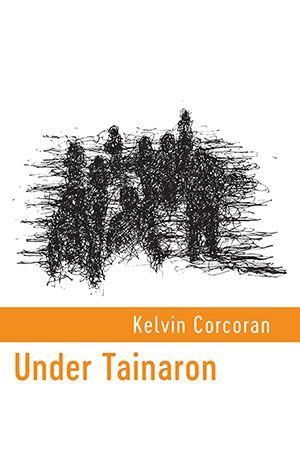
Alexandra Sashe Notes on Disparity
Published October 2025. Paperback, 76pp, 8.5 x 5.5ins, £10.95 / $18
ISBN 9781848619722
This is the author's fourth collection and the poems in it are, she says, the most personal she has ever written. They also make up what she says will be her final collection. As with her previous collections, the poems engage with the language she uses as her medium – and it is her third or fourth language, depending on how one calculates – in the manner of an observer on the outside looking in, rather than one inhabiting that language. It all goes to prove that native speakers do not have it all their own way when writing poetry in English. As the first 2 lines in the book say: "Lip-locked, / place-ridden."
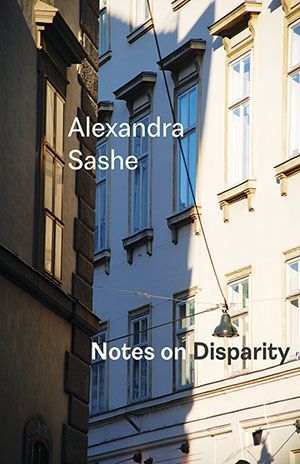
Josephine Balmer Things We Leave Behind: Selected Poems
Edited and introduced by Paschalis Nikolaou
Published September 2025. Paperback, 158pp, 9 x 6ins, £14.95 / $23
ISBN 9781837380039
Things We Leave Behind gathers poems from all five of Josephine Balmer’s acclaimed volumes, excavating a common ground between the distant past and our contemporary world. From the universal grief that echoes down through the centuries in both her ground-breaking first collection,
Chasing Catullus
(2004), and later
Letting Go (2017), to the mirroring of ancient exile and modern warfare in
The Word for Sorrow
(2009), her poetry finds urgent new ways to voice ‘the sound of words you can’t say’.
The Paths of Survival (2017), shortlisted for the London Hellenic Prize and a Poetry Book of the Year in
The Times, explores the fragility of the written word;
Ghost Passage (2022) mines the debris of everyday lives from the ‘dark earth’ of Roman London, rendering them fresh and familiar. Edited and introduced by Paschalis Nikolaou, this
Selected Poems also includes new verse from Balmer’s work-in-progress,
Archaeology of Home, unearthing the devastating effect of dementia on families past and present.
Things We Leave Behind offers new insights into Balmer’s poignant and compelling work, celebrating her ‘necromancer’s task of easing breath / into moss-flecked lungs of our long, long dead’.
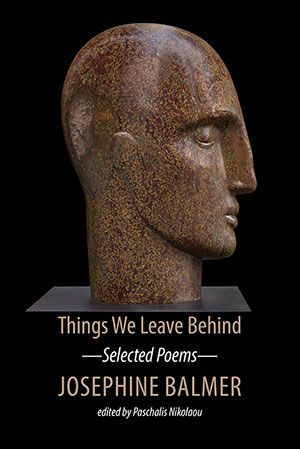
Andrew Duncan On the Margins of Great Housing Estates
Published September 2025. Paperback, 108pp, 9 x 6ins, £12.95 / $20
ISBN 9781848619968
This follows a 12-year year halt, and the first product of the new phase was Feathers on Glass (2023). 'A history of shopping' was started around 2003 and falls on both sides of the gap. That series deals with exchange and retailing, as a successor to a prolonged interest in manufacturing and production. “The Goths as inventors of tourism”, deals with the legend of wealth and culture as the motive which leads barbarians from the world-periphery to surge towards the Mediterranean as if to a shopping mall. The flow of goods lifts people off their feet, is like a river of dreams. 'One absolutely perfect cultural object' describes perfection as what you can't have and which still motivates the life cultural. A poem deals with William Hallam Pegg, a Nottingham lace designer and communist who, during the Depression, produced a monumental design for an allegory of Want and Plenty, as a pattern to be realised in Jacquard lace.
In central place is the long poem 'Calendar Rite', an autobiographical sequence constructed in a double line like two banks of a river; the poem is strung out along a V where there is a hinge and poems along each arm repeat each other’s themes in an altered or defective symmetry. The speaker is faced with a cold river and has to shed every possession to get across it without being swept under. He remembers everything which must be lost, which stored heat and which generated heat. Scenes of unresolved conflict play out in a dream landscape. The rival journeys of several hundred poets are recounted as a race between so many ships, in which almost all are wrecked, their anatomies altered by terminal stresses. Past performances are recalled along with past poems, realised as chains of irrational and compulsive images. Irrational motives for symbolic action are re-voiced as the mineralisation of cherished objects, a personal museum of impassioned seizures which are models for verbal objects, moving from inside to out and surrounding the speaker. The choices infallibly leading to rejection of collective and imposed imagery make for a history of dissidence, symbolised in a tiny 5th century papyrus codex, written at millimetric scale to be easily hidden during police raids, and read with the help of a convex lens. The hidden is boundless and space vanishes into the cracks.

Gustaf Sobin Collected Poems (2nd edition; 1st UK edition)
Shearsman Library Vol. 23.
Edited by Esther Sobin, Andrew Joron & Andrew Zawacki. [Second edition; first UK edition]
Published September 2025. Paperback, 740pp, 9 x 6ins, £29.95 / $42.50 (paperback); £39.95 / $52.50 (hardcover)
ISBN 9781848619944 (paperback); 9781848619982
Sobin's
Collected
appeared posthumously in 2010, and has been unavailable for some two years. Given our long association with the author — his work appeared in the very first issue of
Shearsman magazine in 1981, and we published chapbooks of his work at various times in the 1980s and 1990s — we are delighted to be able to bring this important volume back into print. Sobin was an American poet of a very singular kind, but allied in some ways to the Objectivists and to poets such as Robert Creeley and Robert Duncan. Crucially, he spent most of his adult life in Provence, and counted France, and French poets, among his most important influences. This makes him stand apart from his US contemporaries and leaves him in a slightly odd corner of the literary landscape. What is not in doubt, however, is the quality of the work. Sobin was a major poet, by any standard.
Sobin “is a master of hoverings, hesitances, etched definitions of movement, soundings, fine measurings of air. He leads the mind into a poetry of great distinction, awakening the spirit to a world of errant clarities renewed.” —Robert Duncan
“I can’t think of anyone in our time who has trod the
via negativa
so determinedly and with such purpose. The texture of the ground, but also the grain of what lies beneath it. And so, the miracle, as Oppen would say, that there is a music in all this, in all this nothing, our brief glimpse.” —Michael Palmer
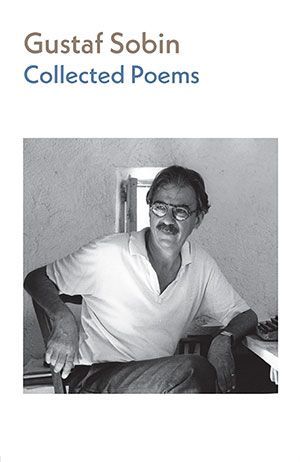
Alfred Celestine Weightless Words — New Selected Poems
Edited by David Miller & Richard Leigh. Revised edition.
Published September 2025. Paperback, 98pp, 8.5 x 5.5ins, £12.95 / $20
ISBN 9781837380138
Alfred Celestine was born in Los Angeles in 1949 and came to London in 1977, remaining there until his death in 2009. He published two books of poetry:
Confessions of Nat Turner (The Many Press, 1978) and
Passing Eliot in the Street
(Nettle Press, 2003).
Weightless Words is easily the most comprehensive selection of his poetry to date, revealing his range and power as a poet.
This new edition replaces one issued in 2017, which, we only discovered in mid-2025, included some material not in fact by Alfred Celestine but which had been found in his posthumous papers. This one, by contrast, is ALL by Al.
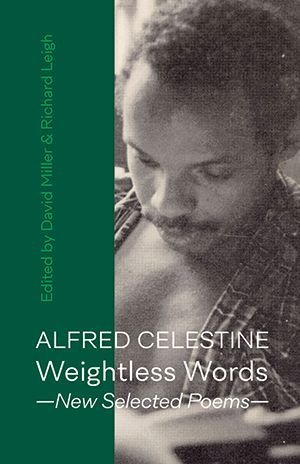
Kenny Knight Ghost Town Street
Published September 2025. Paperback, 112pp, 9 x 6ins, £12.95 / $20
ISBN 9781837380091
Kenny Knight’s fourth collection was written between 2020 and 2022, a time when ordinary towns frequently resembled ghost towns, the author’s native Plymouth being no different from anywhere else in this regard. His surreal mix of deadpan narrative, skewed memory and keen observation – the latter made poignant by the great deterioration in the author’s sight over recent years – is
sui generis. For the reader, it’s a delightful road to be on, and Kenny Knight the ideal travel companion.
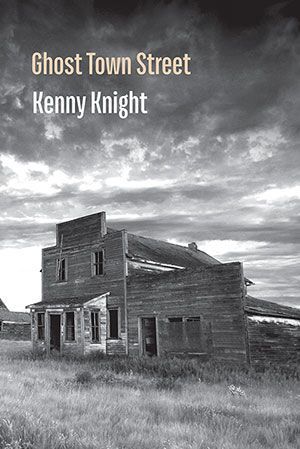
Jane Frank Gardening on Mars
Published October 2025. Paperback, 112pp, 8.5 x 5.5ins, £12.95 / $20
ISBN 9781848619654
This is Australian poet Jane Frank’s third collection of poems but her first in the UK. It transcends terrestrial boundaries, exploring profound connections between the natural world and human experience. Ranging from confessional and ekphrastic poems to surreal evocations of Australian place that express strong emotional connection, these poems maintain a rich dialogue with visual artists and writers of the past and present. Whether she is writing about hang gliding with Leonardo da Vinci, being lost inside a rainforest snow globe or witnessing a pinball game between galaxies, this is tactile and visual writing that bristles with striking language. Moving through her poems is like walking through a forest of imagery, layered and verdant, and is also an expedition through the fabled landscape of imagination and memory where love, longing and loss are familiar compass points. Her poems are often meditations on the joineries of life, the spaces where is meets was and might have been. The introspective is illuminating but there is also an understanding of the ways in which the poet seeks to garden her own life in the face of personal and planetary challenges. The poet is accessible, empathetic and yet displays masterful form and craft. She makes us want to go with her, share the journey, wherever it ends.
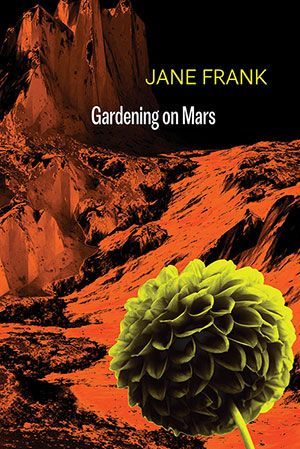
Christina Hennemann Birthmark
Published October 2025. Paperback, 78pp, 9 x 6ins, £10.95 / $18
ISBN 9781848619852
In this notable debut collection, Christina Hennemann charts the complex terrain of growing up, becoming, and belonging. Her keen ecological awareness infuses the work with vivid landscapes from both her German roots and Irish home. With unflinching honesty and lyrical precision, she explores the intersections of gender, class, and sexuality against the backdrop of intergenerational trauma. She weaves personal history with ancient mythologies and archetypes into poems with a vatic and haunting nature. Characteristic of her poems is her playful approach to bilingualism, while her feminist-psychoanalytic lens brings sharp focus to the personal and political dimensions of growing up in a dysfunctional family amid global upheaval.
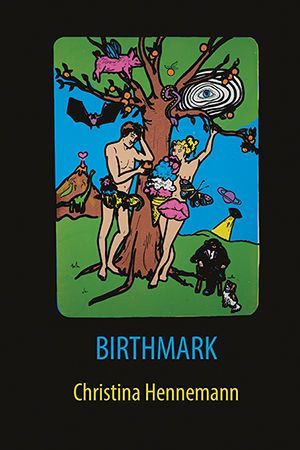
Kelvin Corcoran (ed.) Shearsman 145 / 146
Published October 2025. Paperback, 100pp, 8.5 x 5.5ins, £9.95 / $17
ISBN 9781848619999
The second double issue of Shearsman magazine for 2025 features poetry by Ophira Adar, Alan Baker, Ian Davidson, Adam Flint, Alexander Gaul, John Goodby, Lucy Hamilton, Ellen Harrold, Lynne Hjelmgaard, Peter Larkin, John Latta, Dorothy Lehane, Iain MacLeod, Colin Campbell Robinson, Peter Robinson, Biljana Scott, Aidan Semmens, Penelope Shuttle, Andrew Taylor, Steven Taylor and translations of Catullus (by Jennifer Ingleheart), of Dmitry Blizniuk (by Yana Kane) and of Mercè Rodoreda (by Rebecca Simpson).
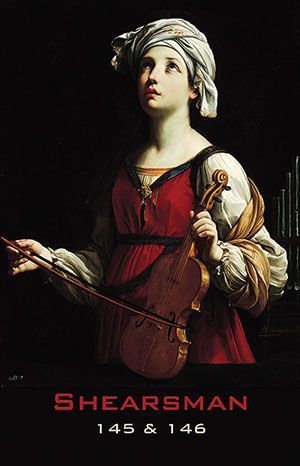
Gustaf Sobin Venus Blue — a novel
Published in September 2025. Paperback, 188pp, 9 x 6ins, £14.95 / $23
ISBN 9781848619913
Ebook edition (available only from retailers) 9781848619920, £5 / $7.50
Venus Blue was Sobin's first novel, published in 1991. A haunting tale of obsession with golden-age Hollywood, the novel tells of Stefan Hollander, a collector of memorabilia connected with the 1930s starlet, Molly Lamanna, whose myth has only grown in proportion over the years, despite her having only appeared in five movies. Hollander comes into possession of a diary written 50 years previously by another who had been fascinated by Molly: Millicent Rappoport, a great beauty herself, and the wife of studio executive. Fuelled by his new discovery, Hollander begins to investigate, taking a journey that parallels that made by his predecessor, and the truth is slowly revealed, ever more complicated, and a tale worthy of the days of film noir is laid before our eyes. Molly, Millicent, and Molly's double, Vivien, come out of the shadows from behind a pall of cigarette smoke, enigmatic figures from another age.
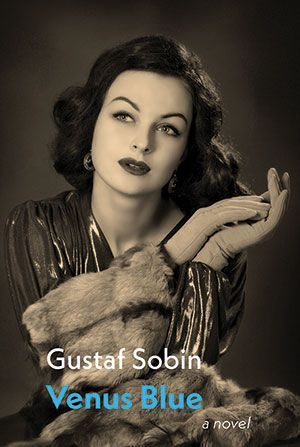
Gustaf Sobin Dark Mirrors — a novel of Provence
Published in September 2025. Paperback, 120pp, 9 x 6ins, £12.95 / $20
ISBN 9781848619876
Ebook edition (available only from retailers) 9781848619906, £5 / $7.50
Dark Mirrors – the author's second novel – is a love story. Guy Fallows finds the inspiration for a novel in a 16th-century Provencal dovecote which he discovers while hiking. It also leads him into a clandestine affair with its owner, and they both become obsessed with the dovecote’s recent history.
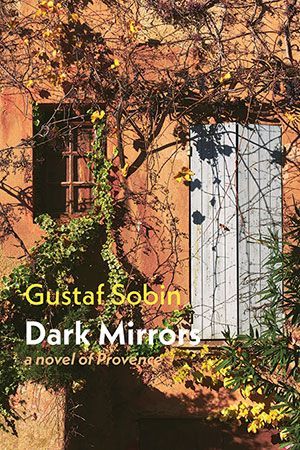
Jorge Valdés Díaz-Vélez Liquid Sand
Translated from Spanish by Sue Burke & Christian Law-Palacín. Bilingual edition.
Published November 2025. Paperback, 100pp, 8.5 x 5.5ins, £12.95 / $20
ISBN 9781837380022
Jorge Valdés Díaz-Vélez was born in Torreon, Mexico, in 1955. He is considered by critics as one of the foremost contemporary poets of Latin America. His work is crossed by universal references that are transformed and enriched thanks to the author’s voice: the four elements, the coordinates of space and time, nostalgia and hope, remembering and forgetting, music and silence, certainties, losses, distances, love and sensuality of high flying, where breathes the great poetry, original, true, eternal and habitable.
Liquid Sand consists of a selection of poems from the books, Jardines sumergidos (2003); Cámara negra (2005); Los Alebrijes (2007); Otras horas (2010); Mapa Mudo (2011), and Nudista (2014).
Francisco de Quevedo Selected Poems
Translated from Spanish by Michael Smith & Luis Ingelmo. Bilingual edition.
Published November 2025. Paperback, 220pp, 9 x 6ins, £14.95 / $23
ISBN 9781837380169
Francisco Gómez de Quevedo y Santibáñez Villegas (1580–1645), was a nobleman whose parents were both at the royal court, and one of the most important poets of Spain's literary golden age, the siglo de oro. He established a formidable reputation as both poet and novelist. A disputatious character, he engaged in many a public battle of words with his main poetic rival, Góngora, as well as with Alarcón and Pérez de Montalbán, all of whom were to feel the impact of Quevedo’s bile. It must be admitted however, that Góngora, at least, repaid him with equal (verbal) measure.
Quevedo was involved in a conspiracy in Venice in 1618, after which he was put under house arrest. In 1620, he was exiled, following the death of his patron, but he was pardoned when Philip IV came to the throne. Quevedo accompanied the young King on some of his journeys, but fell afoul of the Inquisition when some of his satiric verses were printed without permission. His private life seems to have been somewhat disordered, and Góngora accused him in a satire of being a drunk. He was to be constantly involved in controversies, both political and literary, and incurred the wrath of the Count-Duke of Olivares, the most powerful nobleman in Spain, through his criticism of the government.
His oeuvre offers a bewildering range: theological works, literary and critical commentaries, satires, and novels. His poetry fills over a thousand pages in modern editions, and he is without doubt one of the great literary figures of his age.
Stefan Hertmans Goya As Dog: Selected Poems
Translated from Flemish by Donald Gardner
Publication date tbc. Paperback, 132pp, 9 x 6ins, £12.95 / $20
ISBN 9781848619258
Better known in the Anglophone world as a novelist (War and Turpentine, The Ascent, The Convert), Stefan Hertmans is also an essayist, a dramatist, and, from the very beginning, a poet. Initially influenced by the concise art of the German poet, Paul Celan, Hertmans' work later opened up, using longer forms. This selected edition represents the full range of his work.
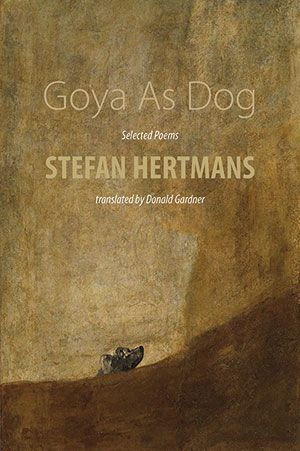
John Montague (translator) French Leaves — A Personal Anthology
Introduced by Elizabeth Wassell Montague
Published in 2025; date tbc. Paperback, 210pp, 9 x 6 ins, £14.95 / $24
ISBN 9781837380107
The late John Montague was one of Ireland's finest 20th-century poets. He spent a lot of time in France, and made friends with a number of French poets. This volume covers his engagement with French poetry of his own time, albeit with a few glances back in history, with selections running from Verlaine and Valéry up to Michel Deguy (1930–2022) and Claude Esteban (1935–2006). While not a definitive anthology of French poetry, the book gives a vivid impression of a fine poet engaging with the work of his peers: personal, but revealing, and foregrounding the work of some under-recognised French poets of the post-war era.
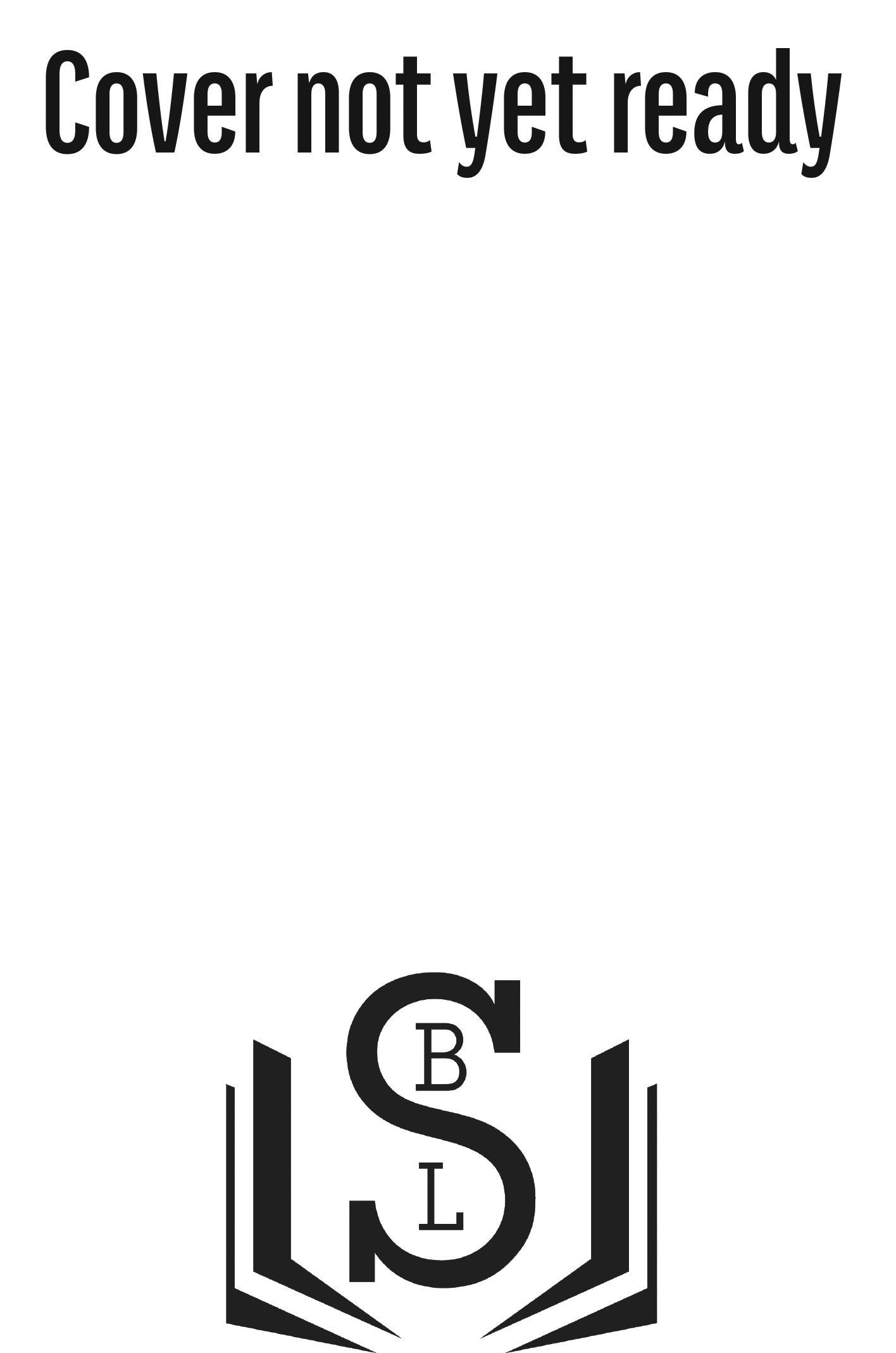
Benedikt Livshits The One and a Half Eyed Archer
First UK edition. Translated from Russian by John E. Bowlt.
Published 2025; exact date tbc. Paperback, 284pp, 9 x 6ins, £16.95 / $25
ISBN 9781848619623
This is a memoir, first published in 1933, of the author's Futurist years in pre-WW1 Russia and Ukraine. While there were other memoirs by the participants in the frenetic avant-garde of those years, most are short and give little real impression of the scene. Livshits (1887–1938), a poet of Ukrainian Jewish origin, was invited to join the young
Hylaea [Гилея] grouping, later styled "Cubo-futurist", by its self-appointed leader, David Burliuk (1882–1967); other members were David's brothers, and the experimental poets Vladimir Mayakovsky (1893–1930), Velimir Khlebnikov (1885–1922), Aleksei Kruchyonykh (1886–1968), and poet-playwright-artist, Vasily Kamensky (1884–1961). The latter was born in Perm, Mayakovsky in Georgia, and Khlebnikov in Astrakhan, whereas the others were all born in Ukraine. In those days of the Russian Empire, all the participants in the movement spoke Russian as a first language, wrote in it and – in the case of Livshits – translated into it. The group collaborated closely with the major artists and composers of the era – Malevich, Exter, Rozanova, Matyushin, Lourié to name just a few – published wild manifestos, artist's books, gave readings that were more like late-20th-century happenings, and generally shook the intellectual world up. The movement burned brightly, but only for a short time, and was destroyed by war, civil war, revolution and exile. Livshits himself was to fall afoul of Stalin's purges in the 1930s, but he left us this remarkable memoir, without which the era would be much hazier. This translation first appeared almost 50 years ago in the USA, and was reissued in a fully-illustrated edition St Petersburg some 20 years ago, but is finally available in the UK and the US again in this new edition.

Gerardo Diego Handbook of Foams — Manual de espumas
Translated from Spanish by Francisco Aragón
Published in January 2026 (but likely to be available early Dec. 2025). Paperback, 136pp, 8.5 x 5.5 ins, £12.95 / $20
ISBN 9781848619869
Manual de espumas was published in 1924 and was one of the most important eruptions in the early phase of the 20th-century Spanish avant-garde. Heavily influenced by Vicente Huidobro and his theories of Creationism, the book is effectively the first Creationist volume by someone other than Huidobro himself, while also being the volume that carried the banner for Ultraism, Spain's first movement of the
vanguardia.
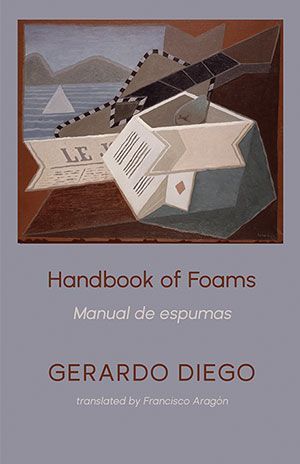
Attila József The Song of the Cosmos: Selected Poems
Translated from Hungarian by Ágnes Lehóczky & Adam Piette. Bilingual edition
Introduced by George Szirtes. With illustrations by György Békeffi.
Published February 2026. Paperback, ca. 300pp, 9 x 6ins, £17.95 / $25
ISBN 9781837380015
These translations by Piette and Lehóczky form a five-year long project with an ambition to translate a significant selection of the poems of the modernist, socialist, working-class Hungarian poet, Attila
József (1905–1937). József lived a poverty-stricken, passionate and unstable life as a wanderer, a bohemian, a poet, a thinker, a non-conformist, a hobo and a lover till his untimely death by suicide, struck by a train, in Balatonszárszó on Lake Balaton, aged only 32. His poetry is surrealist, existentialist, Villonesque, tough-minded, quasi anarchist, deeply drenched in Hungarian folklore and the folk song, passionate, lyrical, elegiac, marked by his solitary wandering, his keen observation of the lives of the people, by his psychoanalytically inflected gaze into the unconscious, into the mind and body of lovers, his philosophical focus on dialectic and social injustice. The lyrics, free verse and formal, in an astonishing number of experimental forms, range from the metaphysical to the memoir, have filiations to French medieval, post-symbolist and surrealist poetry, fuse Nietzsche, Marx, Hegel and Freud in daring raids on the inarticulate, sing with haunting vernacular and ancient beauty and rise to extraordinary heights and flights of the imagination, yet are always grounded in the real, in the concrete particulars of the metropolis, the dark streets of the underclasses of this world.
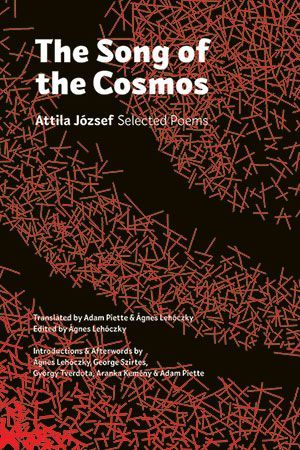
Vicente Huidobro Altazor
Translated from Spanish by Tony Frazer & Terence Dooley.
Published 2026, date tbc. Paperback, 208pp, 9 x 6ins, £14.95 / $24
ISBN 9781848618640
Altazor is increasingly seen as one of the key works of the 20th-century Hispanic avant-garde in poetry. Apparently put together over several years, it looks back in part to the ground-breaking volume Ecuatorial (1918), imbibes a number of futurist tropes from that same era, takes in the surrealist wave that took hold in the mid-1920s, and ends with shattered pieces of language that appear to admit of the impossibility of finishing the work coherently, or even of coherent speech, while also implying a more pessimistic view of the world than that which Huidobro would have espoused as a younger man during the heyday of Cubist Paris. In amongst all this, the poem’s eponymous protagonist flies high and low, taking in the heavens and the depths of hell, following both Dedalus and Orpheus. While the book evidently left his contemporaries puzzled, and had minimal initial impact, Altazor today looks uncannily prophetic, even post-modern, in its emphasis on verbal games and trickery, on defamiliarisation, and being comfortable with a lack of any conclusion. Huidobro even boasted of this lack in a letter to Luis Buñuel, referencing Lautréamont and Rimbaud as other “failures” whose company he was glad to keep.
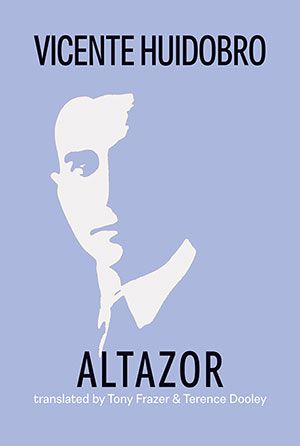
Vicente Huidobro Painted Poems
Poem texts translated from French by Tony Frazer. With an essay by Rosa Sarabia and a dozen full-colour images.
Published in 2026. Date tbc. Paperback, ca. 96pp, 9 x 6ins, £12.95 / $20
ISBN 9781848618206
In 1922, in Paris, Vicente Huidobro exhibited a dozen painted poems: poster-sized, these exotic creations were an attempt by the poet — who was close to a number of the leading painters of the time — to take the Cubist leanings in his verse to their logical extreme. Here Apollinairean
calligrammes — and Apollinaire was one of Huidobro's first friends in Paris — move from being pictorial poems to being pictures in their own right. The volume includes all the recreated versions made for the 2001
Salle XIV exhibition at Madrid's Reina Sofía Museum, along with with as many reproductions of the originals, and their drafts, that we have been able to assemble.
